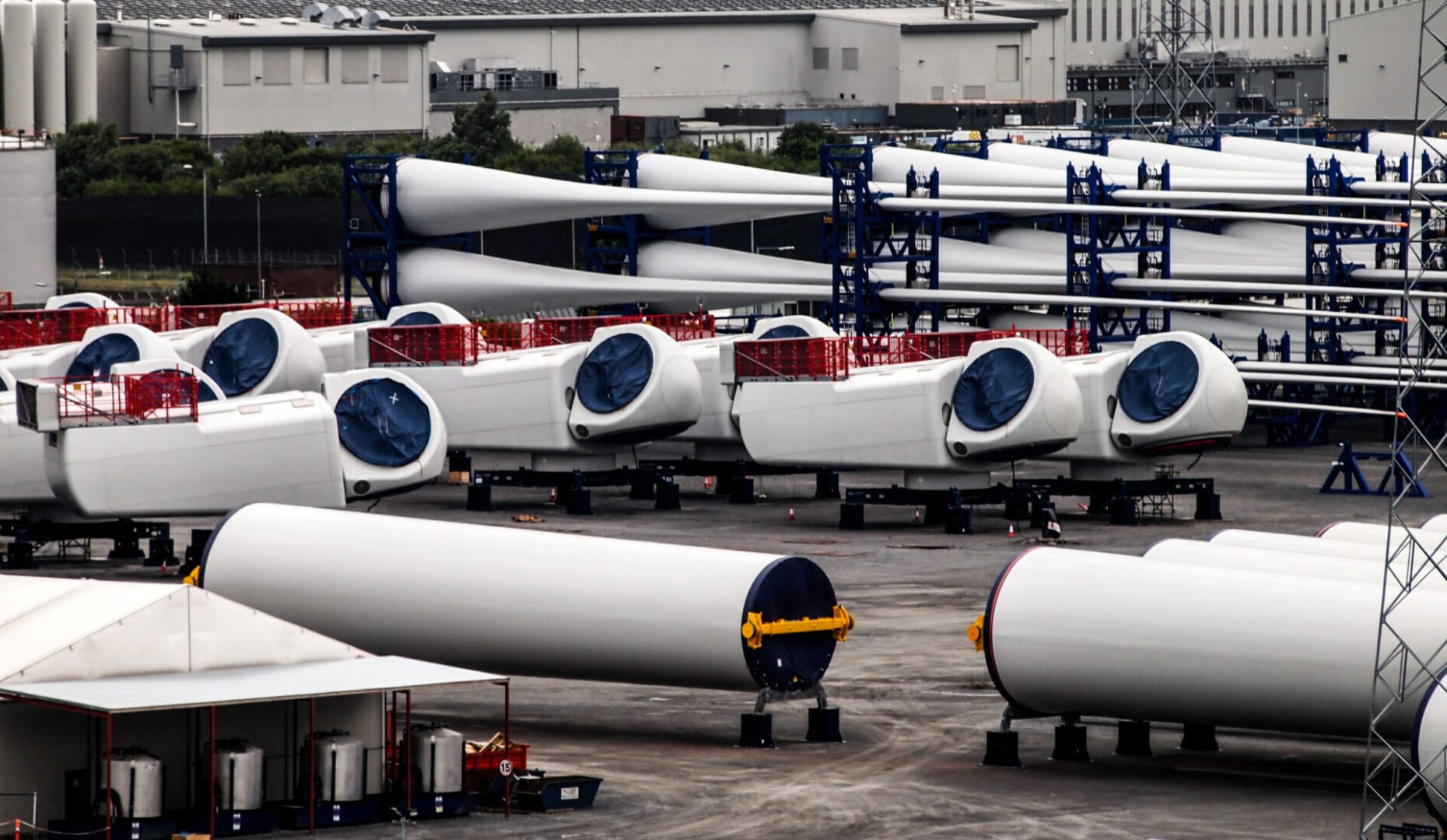Efficient logistics and streamlined supply chains are now critical success factors within the wind energy sector and recent market reports underscore the importance of port capacity, as well as optimizing transportation and assembly processes.
This is where Shoreline Design’s Inventory Management provides digital optimization assistance, allowing users to model transportation specifics with a focus on accuracy in project planning. The tool enables the itemization of component transportation, setting vessel capacities, and modelling assembly stages, thereby significantly contributing to heightened project efficiency. This advanced feature empowers users to intricately model the specifics of their wind energy projects, providing a level of granularity essential for navigating the landscape of project planning, component transportation, and assembly for windl logistics.
The new Inventory Management functionality allows users to model all the details of their renewable energy project. A common user request has been to model more granular details of a project, such as the transport and pre-assembly of individual components such as blades, nacelles and tower components. This can now be achieved using the Inventory Management functionality.
Notably, this functionality is not confined by energy types, as it stands agnostic to the renewable energy sources. Whether modelling offshore wind, onshore wind, or Solar Er på vej! projects, users can harness the power of Shoreline Design’s Inventory Management to meticulously model manufacturing, assembly, and marshalling locations, at which components are stored and/or assembled.
Inventory Management for modelling exactly what is being transported
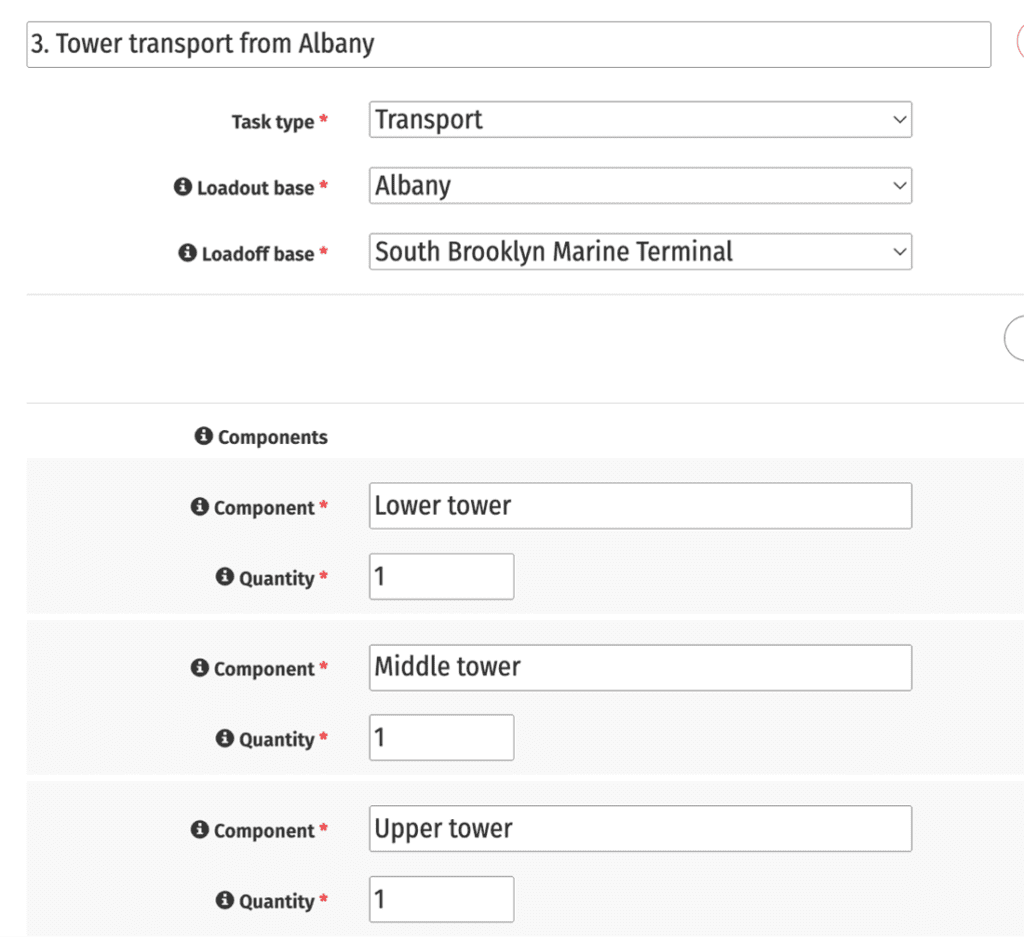
Shoreline Design allows users to model the specifics of what is being transported: allowing increased accuracy of project planning. In the following example the user has itemised that tower components will be transported as part of one task for one vessel.
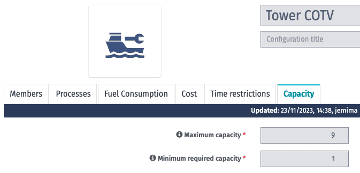
It is possible to set the capacity on the vessel for how many components the vessel can hold: in this case, likely 9 of each, meaning that a total of 27 tower components will be transported each time.
Model exactly what is being assembled
It is also possible to model in detail the different stages of assembly, from the input components to the output component(s). For example, a floating foundation may be assembled in port from several components (such as casts and pipes) and the 3 or 4 tower components assembled on top of the floating foundation, followed by the nacelle and blades attached (see screenshot).
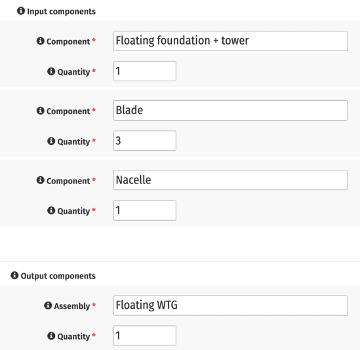
Model exactly what is being stored
Users can model the port capacity for each type of component whenever it touches a base. For example, tower components which start their journey from the manufacturing location will be listed individually there (Upper Tower, Middle Tower, Lower Tower), and also listed individually at the pre-assembly harbor which they are transported to. At the pre-assembly harbor they will also listed as the collective (Tower Assembly) which they become after the assembly task has been performed.
Itemising the initial stock level allows users to itemise whether components start their life at a given location or are produced at the location. Setting the maximum stock level allows users to accurately model how much space is available for storage of components at a given location – helping mitigate some of the bottlenecks being experienced by the offshore wind industry.
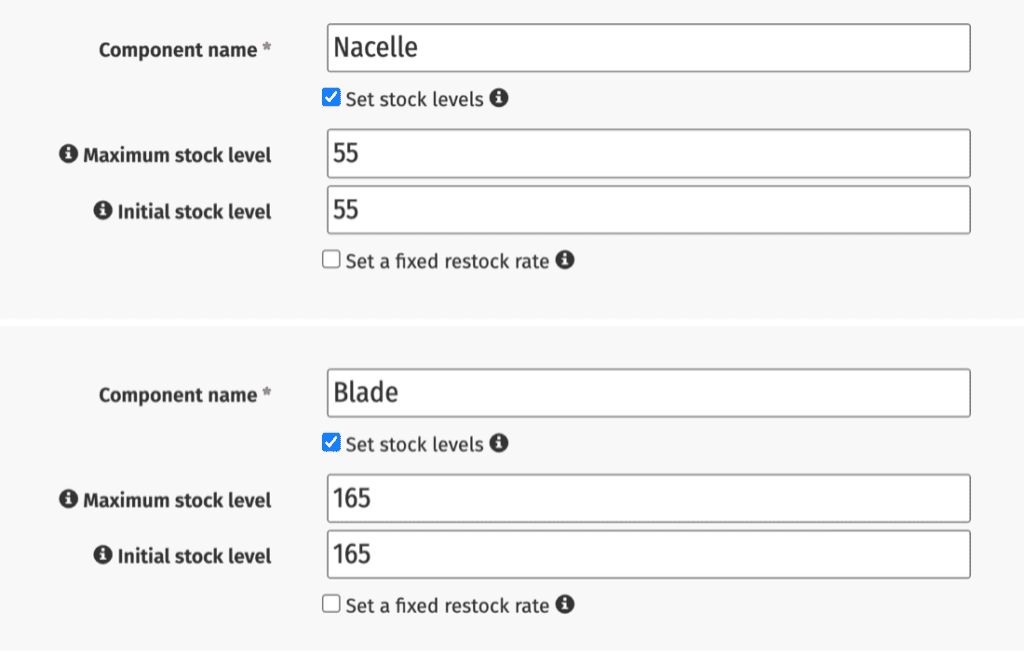
Want to find out how Inventory Management can assist your wind logistics?
To complement these above-described capabilities, Shoreline has delved into the critical question of port capacity in related articles for ‘Do We Have Sufficient Port Capacity?” As well as exploring best practices in modelling construction scenarios for floating foundations.

